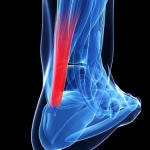Can EHR transparency and patient portals change health care?
Electronic health records are seen as the future of medicine. Not only do they allow physicians to easily track patients' diagnoses and medications, but they provide analysts with the ability to discover health trends in populations. Many patients might be concerned over who has access to their EHR. While this is a valid concern in some cases, it could be more important to consider whether or not they have access to their own data. More transparency could lead to higher quality of care and technology solutions.
The U.S. Centers for Medicare and Medicaid Services defines one criterion for stage 2 of meaningful use for eligible professionals as providing patients with the ability to view, download or transmit their health information within four business days of the information becoming available. Hospitals must complete the same task within 36 hours of discharge.
The benefits of EHR transparency
Giving patients access to their EHRs can be beneficial for most physicians. John Hoffstatter, a physician assistant and delivery director of advisory services at CTG Health Solutions, told InformationWeek that patients who read through their own EHRs have improved care and reduced costs. For example, it can mitigate duplicate tests and help reconcile medication lists.
Generally, patients see a variety of specialty physicians and each one will create a copy of their own record. It is important for patients to make note of any mistakes or disagreements. InformationWeek reported that some hospitals have a process for discussing conflicts with EHR information.
"If they disagree with what's in there, they have a right to voice their opinion," said Richard Rosenhagen, assistant vice president for EHR and health information management at South Nassau Communities Hospital. "That disagreement doesn't give them the right to amend the record."
This will create an open dialogue between the patient and the physician rather than making every decision cut and dry. This can improve the health of some patients. In the case of an EHR listing alcoholism as a disease, the patient can enquire as to why that is suspected and try to correct the problem by either seeking treatment or proving the information to be false.
The current use and advancement of patient portals
A study conducted by Frost and Sullivan found that the U.S. patient portal market is expected to reach $898.4 million in revenue in 2017. The increase is believed to be caused by the meaningful use stage 2 requirement, but researchers stated that many are adopting patient portals because their EHR system supports the service.
Nancy Fabozzi, principal analyst of Connect Health at Frost and Sullivan, stated that fully engaging patients as a member of their care team is crucial to encourage them to become more involved in their health care. This can result in behavioral changes and positively impact their health, she added.
If more patients start using EHR portals, they have the ability to alter this technology market for the better. It could lead these systems to become more integrated with financial information, scheduling tasks, social networking and electronic health visits, according to Fabozzi. Adding these services will turn physician visits into only one sector of health care. The other parts of patient care can fall more on themselves, as well as give physicians more accountability when it comes to making health choices for their patients.
Advancements in mobile technology and applications have already caused EHR systems to work on smartphones and tablets. Hoffstatter told InformationWeek that patients are "horrible historians." If patients have an easily accessible portal on those devices, perhaps they could enter some information of their own finding to their EHR and receive better care at their next visit to their specialty physician.



